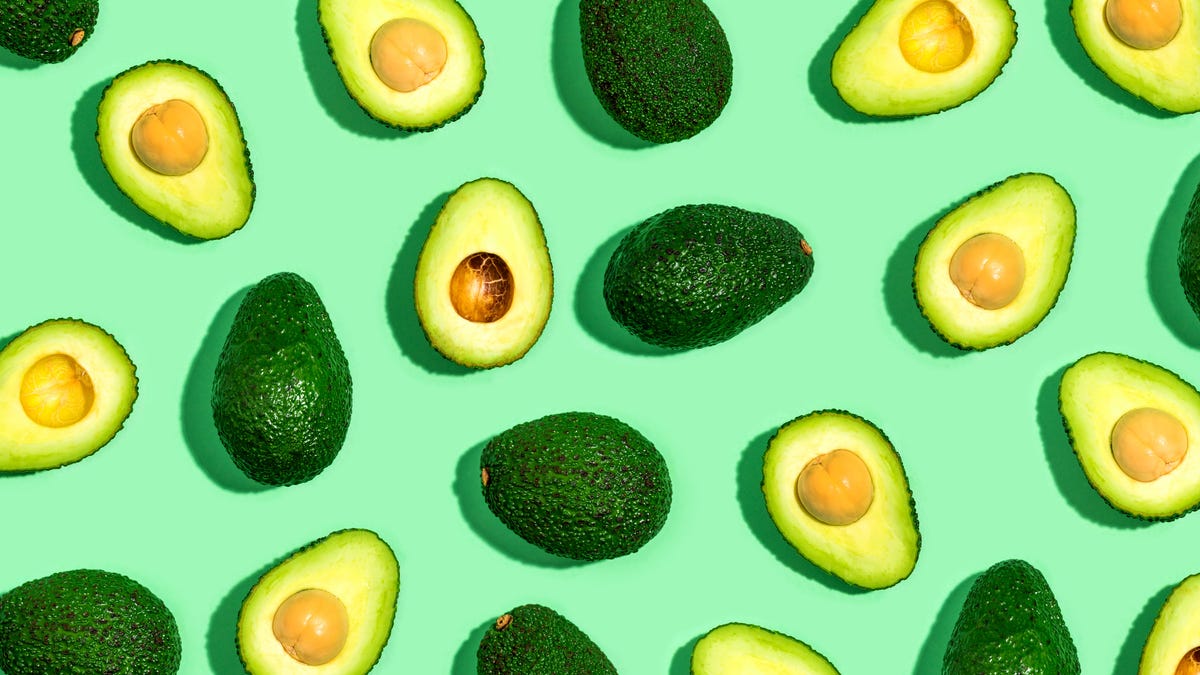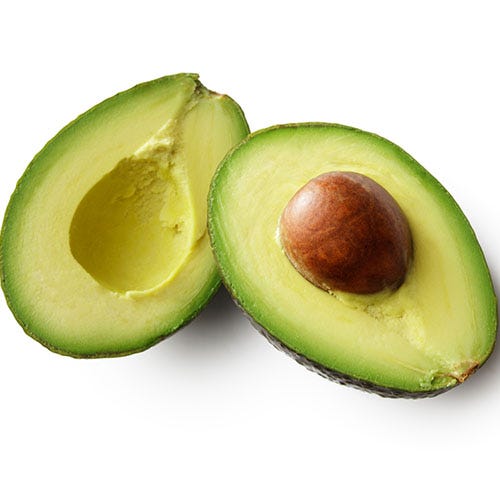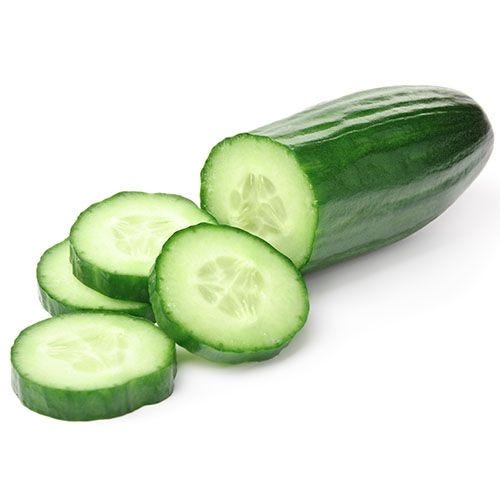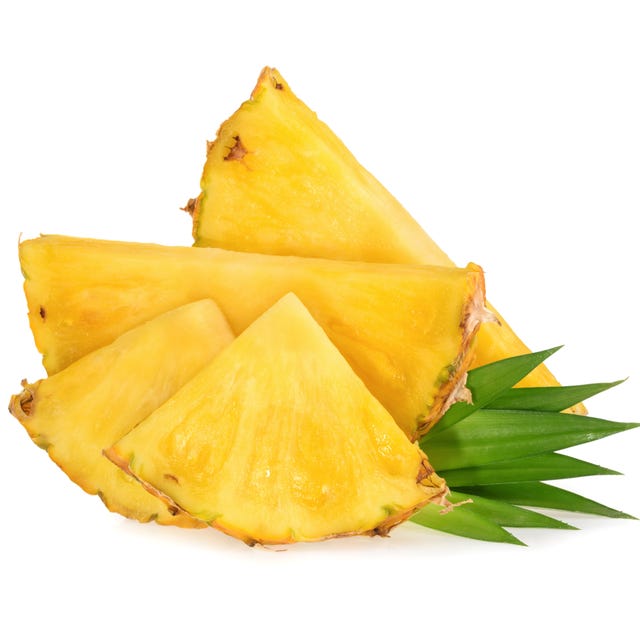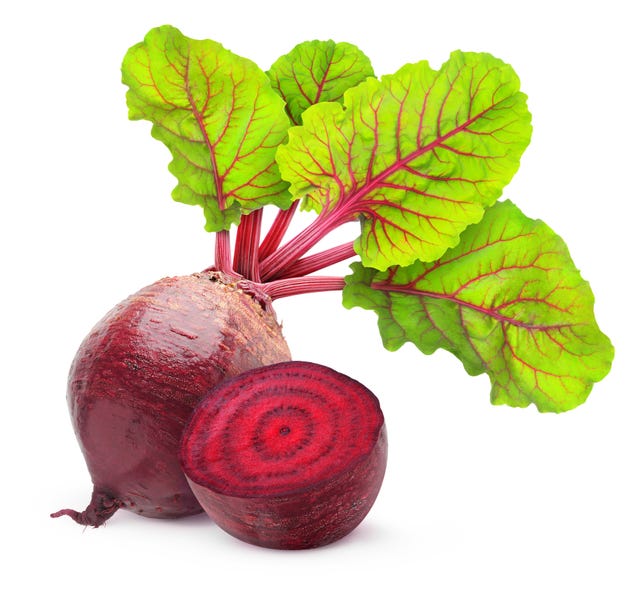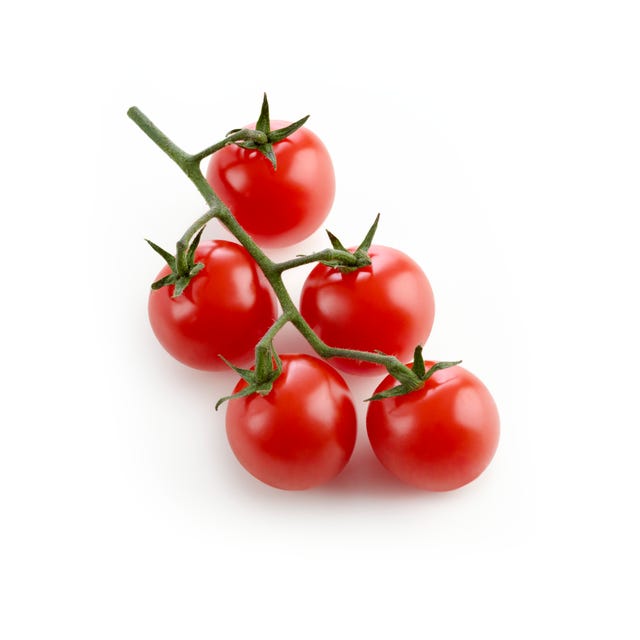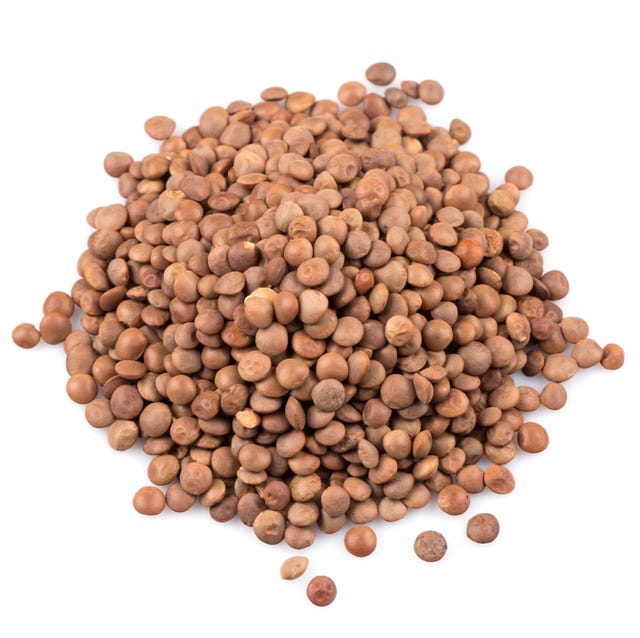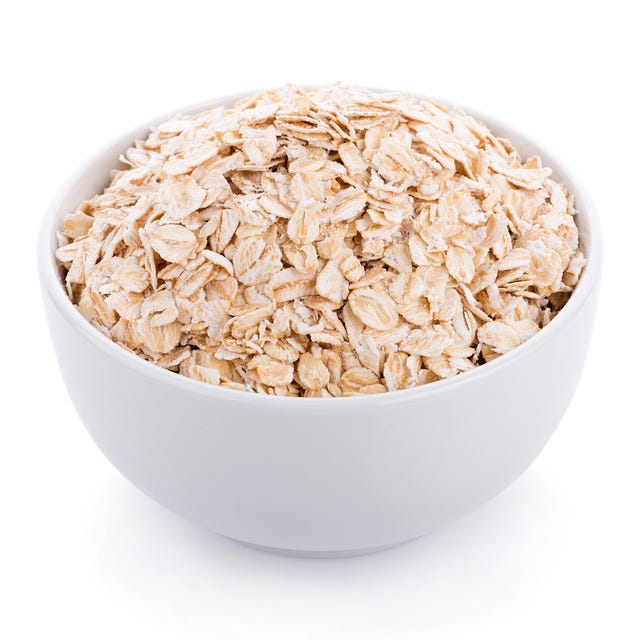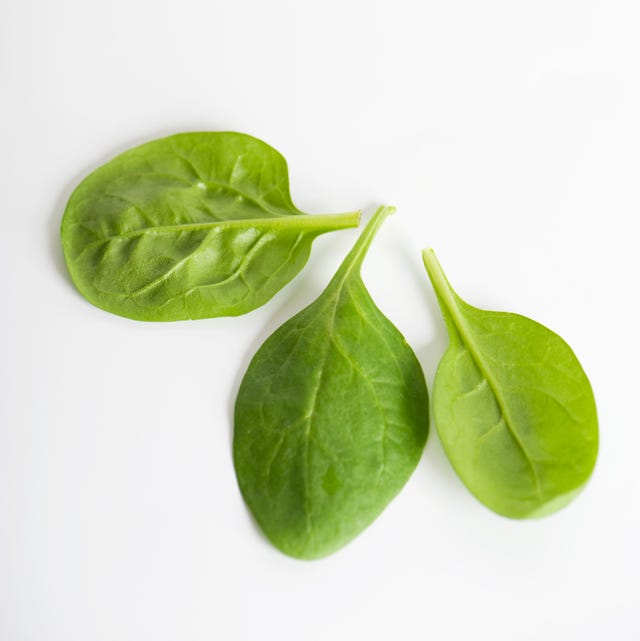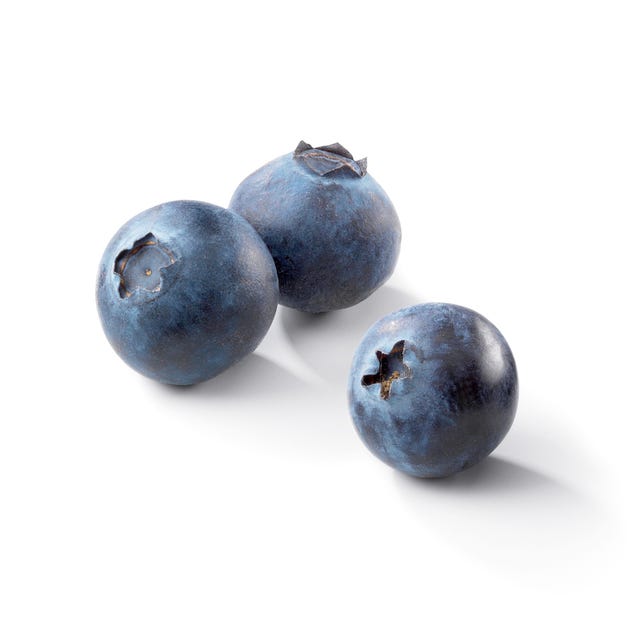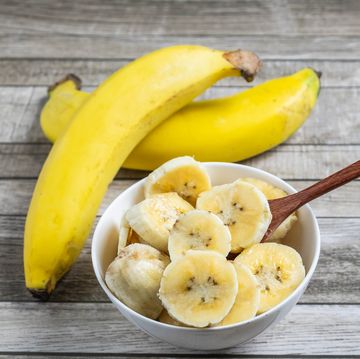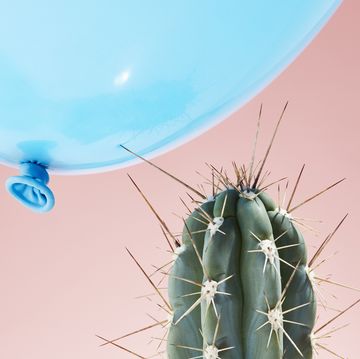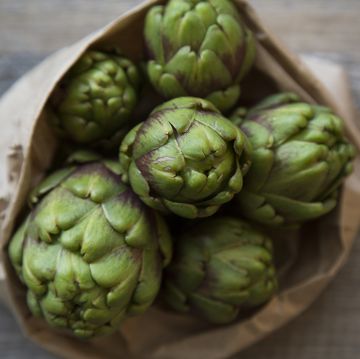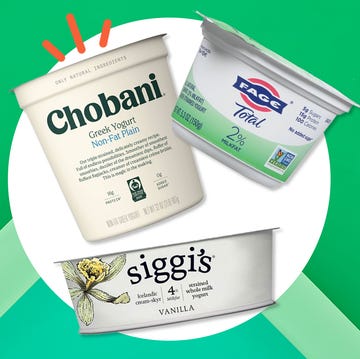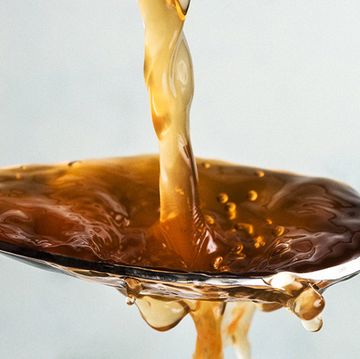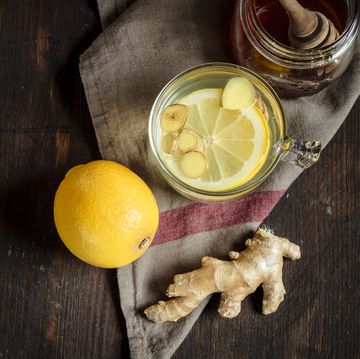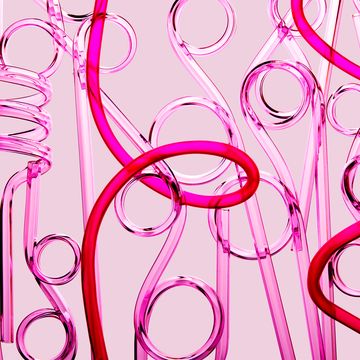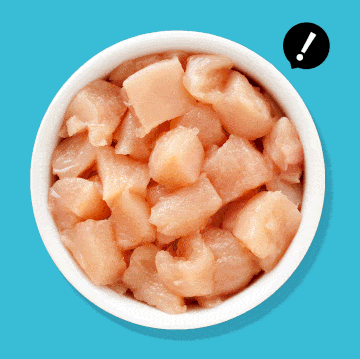Bloating happens to the best of us, and it’s usually nothing to worry about.
But it can make you feel super uncomfortable, and chances are you want to get rid of that feeling ASAP. While you can reach for an over-the-counter aid for relief, you'll likely want to try foods that help with bloating first.
Pinpointing the types of food you should and shouldn't eat can help you better predict the possibility you'll be dealing with gas bloat after a big meal. Dairy, beans, cruciferous veggies like broccoli or cauliflower, or greasy foods can increase those odds for many people. “We’re all very different, and some foods that might trigger gas for one person don’t for another,” notes Jessica Cording, RD, the author of The Little Book of Game Changers.
Another type of bloat, water bloat, often flares up due to hormonal changes during your menstrual cycle, dehydration, or excess sodium intake. “Most Americans over-consume salt but under-consume potassium, which is a mineral found in fruits and veggies that helps counterbalance sodium,” says Samantha Cassetty, RD, an advisor to Performance Kitchen.
Eating a lot of packaged sauces and meals, salty snacks, takeout meals or fast food typically leads to consuming too much sodium. Jaclyn London, RD, suggests eating foods that provide potassium, magnesium and calcium. "Make sure you're staying hydrated and consuming these key minerals (electrolytes) that also serve to counterbalance the effects of sodium in your body."
Water is pretty important for de-bloating, says Torey Armul, RD, a national media spokesperson for the Academy of Nutrition and Dietetics—especially when your diet is full of high-fiber foods. "When you eat fiber, you need to drink enough water to digest and move it efficiently through your GI tract," she says.
Just note that in the short term, water can make you feel more bloated. Also, it's smart to steer clear of fizzy water or seltzer, which can introduce extra gas into your digestive tract (not ideal).
Bloating typically goes away on its own, but you can speed up the process by snacking on these 25 foods that reduce bloat, according to nutritionists and backed by research.
Meet the experts: Jaclyn London, MS, RD, CDN, is a CPG consultant, podcast host and author of Dressing on the Side (and Other Diet Myths Debunked). Jessica Cording, RD, is a nutritionist and the author of The Little Book of Game Changers. Samantha Cassetty, RD, is an NYC-based nutritionist and the co-author of Sugar Shock. Torey Armul, RD, is a nutritionist and national media spokesperson for the Academy of Nutrition and Dietetics.
1. Yogurt
Yogurt is packed with probiotics—good bacteria that populate your GI tract to support a healthy digestive process and calm inflammation. “Probiotics are an important piece in the big picture of gut health, especially when you’ve got bloating and gas,” says Cording. Probiotics can reduce bloating and abdominal swelling in those with irritable bowel syndrome (IBS), studies show.
Opt for Greek yogurt to bump up the protein to 20 grams while lowering the carb count, and consider topping your bowl with some fresh fruit like grapefruit slices or blueberries for a fun sweet treat. Can’t digest yogurt because of the lactose? Try kefir, suggests Cording. “It’s 99 percent lactose-free and has a greater variety of probiotic bacteria,” she says.
Per 7 oz. serving of Greek yogurt: 146 calories, 4 g fat (2.5 g sat fat), 68 mg sodium, 8 g carbohydrates, 7 g of sugar, 0 g fiber, 20 g protein
2. Ginger
One of the oldest herbal medicines around, ginger’s anti-inflammatory properties work wonders on bloat and gas.
“Ginger contains a digestive enzyme called zingibain, which helps the body break down protein,” says Tara Coleman, a clinical nutritionist in San Diego. Ginger has a a soothing quality on the digestive system by decreasing pressure on the lower esophagus to reduce cramping and bloating, research shows.
“It also has a nice relaxing effect on your intestines, reducing inflammation in your colon, which helps the food you eat pass through your system more easily, and in turn, reduce the bloat and gas you experience,” says Kristin Kirkpatrick, RD, a wellness manager at the Cleveland Clinic Wellness Institute. Enjoy it in a warm cup of homemade tea to sip on it before, during, or after a meal.
Per 1 tsp fresh ginger: 2 calories, 0.01 g fat (0 g sat fat), 0 mg sodium, 0.4 g carbohydrates, 0.03 g of sugar, 0 g fiber, 0.04 g protein
3. Fennel
Fennel is a natural diuretic that can also help banish intestinal gas (a.k.a. it works on both types of bloating).
“The compounds anethole, fenchone, and estragole in fennel seeds have antispasmodic and anti-inflammatory properties that relax intestinal muscle and allow trapped gas to dissipate,” says Coleman. Fennel can also reduce bloating and gas production by improving digestion, studies show.
While you can add the seeds to a cup of tea, Cording says you can also add a cup of sliced fennel bulb into your salad to add a little extra fiber to help you fill up and feel satisfied for longer.
Per 1 cup sliced fennel bulb: 27 calories, 0.2 g fat (0 g sat fat), 45 mg sodium, 6 g carbohydrates, 3 g of sugar, 3 g fiber, 1 g protein
4. Bananas
Potassium is the main reason this low-maintenance food helps with bloat.
“Part of what causes your body to retain water is you’ve eaten too much sodium,” says Cording. “Potassium-rich foods help flush out sodium and water." This helps balance body fluid and get rid of excess water in the body to squash your bloat, research shows.
While eating one banana won't magically cure bloat, eating potassium-rich foods like bananas throughout the day will help reduce bloat, she adds.
Per medium banana: 105 calories, 0.4 g fat (0 g sat fat), 1 mg sodium, 27 g carbohydrates, 14 g of sugar, 3 g fiber, 1 g protein
5. Lemons
Yep, the old lemon water trick actually works. Lemon juice is very similar in acidity to the stomach's digestive juices (yum!) says Coleman, so it can help relieve bloating and other symptoms of indigestion.
By drinking lemon juice on the reg, you’re doubling down on hydration plus getting acids to help your GI tract move things along faster since a 2022 study published in the European Journal of Nutrition found the citric acid in lemon boosts the digestive fluid in your stomach to break down food.
Per ounce of lemon juice: 7 calories, 0.1 g fat (0 g sat fat), 1 mg sodium, 2 g carbohydrates, 1 g of sugar, 0.1 g fiber, 0.1 g protein
6. Avocado
If you’re on a low-carb diet, like keto, avocados are an excellent source of bloat-reducing potassium and antioxidants for just six grams of carbs—a quarter of what you’d get in a banana. Research also suggests that avocados can improve your gut health and combat bloat by breaking down fiber and reducing bile acids (digestive fluids produced by the liver).
Per 1/3 fruit: 106 calories, 10 g fat (1 g sat fat), 5 mg sodium, 6 g carbohydrates, 0.4 g of sugar, 4 g fiber, 1 g protein
7. Cucumber
“Cucumber contains lots of water to help keep you hydrated,” says Cording, which is great for helping to clear out excess water from your cells and gas from your GI tract.
What’s more, cucumbers contain sulfur and silicon, which act as a mild natural diuretic that makes you pee. They’re also a good way to get your GI tract moving minus the gassy factor of cruciferous veggies.
Per 1/2 cup slices: 8 calories, 0.06 g fat (0 g sat fat), 1 mg sodium, 2 g carbohydrates, 1 g of sugar, 0.3 g fiber, 0.3 g protein
8. Asparagus
The amino acid asparagine in asparagus is another known diuretic that helps reduce water retention.
“Asparagus also contains prebiotic fiber, which are good to nourish the probiotics in your gut and keep your digestive tract running,” says Cording. Research also suggests that asparagus contains prebiotic fiber, which feeds the good bacteria in your gut and can promote healthy digestion.
Per 1 cup serving (raw): 27 calories, 0.3 g fat (0 g sat fat), 0 mg sodium, 5 g carbohydrates, 3 g of sugar, 3 g fiber, 3 g protein
9. Kiwi
These powerful little fruits contain another enzyme, actinidin, that helps speed up digestion, says Cording. Just two kiwis are also an excellent source of bloat-beating potassium and fiber—all for just 90 calories. Studies show they can induce normal bowel movements to minimize bloating and stomach pain caused by constipation.
Per 2 whole kiwis: 90 calories, 1 g fat (0 g sat fat), 0 mg sodium, 22 g carbohydrates, 13 g of sugar, 4 g fiber, 2 g protein
10. Papaya
The papain in papayas is yet another enzyme that helps break down the foods you eat and fight inflammation. The creamy fruit is also loaded with water and fiber, which help promote digestion and regularity to minimize bloat.
“You can buy papain in supplement form. It’s very effective for soothing the digestive process, especially during the menstrual cycle,” says Cording.
➡ Join WH+ today and get unlimited access to digital content, exclusive workouts, and more!
You’ll also get fiber along with a healthy dose of the anti-inflammatory vitamin A. Just keep a serving to one cup, adds Cording, since the high amount of fructose can sometimes be rough on your GI system.
Per 1 cup pieces: 62 calories, 0.4 g fat (0.1 g sat fat), 12 mg sodium, 16 g carbohydrates, 11 g of sugar, 3 g fiber, 0.7 g protein
11. White Beans
While other beans can lead to mega-bloat, white beans (a.k.a. navy beans) are actually "high in potassium, which helps balance out sodium levels in our body," says Keri Gans, RD, author of The Small Change Diet. Research shows white beans contain loads of fiber, which improves digestion and promotes regular bowel movements to limit bloat due to constipation.
White beans are a great addition to salads or soups, along with kale, carrots, and other vitamin-rich veggies. Or, you can use them as an alternative to chickpeas in hummus for an equally protein-packed spread.
Per cup, cooked: 100 calories, 1.5 g fat (0 g sat fat), 110 mg sodium, 25 g carbohydrates, 2 g of sugar, 12 g fiber, 8 g protein
12. Pineapple
Another water-dense fruit, pineapple contains a digestive enzyme called bromelain, says Gans.
"Mostly reported anecdotally, bromelain is thought to assist in digestion, by breaking down proteins in the stomach that may otherwise cause bloating," she explains. Throw pineapple in your morning smoothie, or top a piece of toast with a spread of cottage cheese and a few slices of pineapple.
Per half cup: 80 calories, 0 g fat (0 g sat fat), mg sodium, 0 g carbohydrates, 16 g of sugar, 1 g fiber, 0 g protein
13. Beets
Beets are another potassium-rich food, which can help counteract sodium in your body, and therefore bloat. In fact, "One cup of beets has more potassium, fiber, and protein than a medium banana," says Armul.
Roast beets before adding to your salad for some extra crunch or slice them into sticks and bake them to make beet "fries."
Per cup, cooked: 37 calories, 0 g fat (0 g sat fat), 32 mg sodium, 12 g carbohydrates, 6 g of sugar, 2 g fiber, 1 g protein
14. Celery Root
Celery root is a powerhouse for fighting water retention and bloat, because it contains a compound that acts like a diuretic.
“It makes you urinate, so it can help with any water bloat you’re feeling,” says New York City-based dietitian Brigitte Zeitlin, RD.
Cut celery root into cubes and sauté with thyme and onion, purée it into soup, or roast it in the oven as “steaks.”
Per 1 cup diced: 19 calories, 0.2 g fat (0.1 g sat fat), 96 mg sodium, 4 g carbohydrates, 2 g of sugar, 2 g fiber, 0.8 g protein
15. Tomatoes
When it comes to water bloat, consuming more water (which tomatoes contain lots of) is key. “It might sound counter-intuitive, but fluid pushes out fluid,” says Zeitlin.
Because heat evaporates tomatoes' water and breaks down their fiber (which is key to keeping your digestion moving), it's best to eat 'em raw. Chop them up into a salsa, toss into a salad or add slices to a sandwich.
Per 1 cup chopped or sliced: 34 calories, 0.4 g fat (0.1 g sat fat), 9 mg sodium, 7 g carbohydrates, 5 g of sugar, 2 g fiber, 2 g protein
16. Artichokes
When foods linger in your gut, they ferment, resulting in gas. Adding fibrous foods, like artichokes, to your diet prevents this by pushing foods along. Studies also find that artichoke promotes the good bacteria in your gut, which can keep you regular and relieve bloating caused by indigestion.
“They’re way more versatile than they get credit for,” says Zeitlin. Add artichoke hearts to salads, pasta, or toast—or simply grill them whole and dip them in yogurt-dill sauce. Just watch the sodium count on canned versions.
Per ½ cup artichoke hearts, cooked in water: 45 calories, 0.3 g fat (0.1 g sat fat), 50 mg sodium, 10 g carbohydrates, 0.8 g of sugar, 5 g fiber, 2 g protein
17. Lentils
Don't beans make you bloated? Well, it depends. Legumes do make some people feel gassy.
That said, though, lentils are “a phenomenal source of fiber, and a little bit goes a long way,” says Zeitlin. If you handle legumes well, the fiber in lentils help you push anything lagging in your GI tract right on through.
Zeitlin recommends sautéeing lentils to make them easier to digest. (Don't worry, you won't break down all their fiber.)
Per 1/2 cup cooked in water: 110 calories, 0.4 g fat (0.1 g sat fat), 188 mg sodium, 19 g carbohydrates, 2 g of sugar, 8 g fiber, 9 g protein
18. Oatmeal
All whole grains contain bloat-beating fiber, but oatmeal might take the cake.
“Having it first thing in the morning will help you move your bowels sooner, so you’ll feel better all day,” says Zeitlin. Top your oatmeal with chopped walnuts and berries for additional fiber, antioxidants, and protein.
Per 1 cup cooked with water: 147 calories, 1 g fat (0.2 g sat fat), 173 mg sodium, 32 g carbohydrates, 1 g of sugar, 5 g fiber, 6 g protein
19. Spinach
High in immune-boosting and inflammation-fighting antioxidants, spinach has truly earned its reputation as a superfood, says Zeitlin.
You’ll get the most fiber by eating spinach raw, but cooking it makes upping your intake easier. Toss a handful of baby spinach into still-hot stir fries or pastas so it wilts just slightly.
Per 1 cup raw: 7 calories, 0.1 g fat (0 g sat fat), 24 mg sodium, 1 g carbohydrates, 0.1 g of sugar, 0.7 g fiber, 0.9 g protein
20. Blueberries
These little antioxidant-packed fruits are high in water and fiber to keep your digestive system grooving, says Atlanta-based dietitian Marisa Moore, RD.
Frozen berries have just as many nutrients as fresh ones, so toss either into whole-grain pancakes or layer on top of a parfait with plain low-fat Greek yogurt.
Per 1 cup raw: 80 calories, 1 g fat (0 g sat fat), 0 mg sodium, 17 g carbohydrates, 12 g of sugar, 4 g fiber, 1 g protein
What foods should you avoid to limit bloat?
Eating the right foods is a great way to keep bloat at bay, but it’s not the only thing that can help.
Eat slowly
For starters, how you eat is just as important as what you eat. “When you eat quickly, you swallow more air, which contributes to bloating,” explains Cassetty. Make an effort to eat slowly and chew foods more thoroughly. Remember: It’s a marathon, not a race.
Limit FODMAPS
It’s also important to limit your intake of carbohydrates known as FODMAPS, which aren’t well digested and get fermented, thereby producing excess gas and bloating. Examples of high-FODMAP foods are dried fruit, cauliflower, kale, and milk. “People with IBS are especially vulnerable to bloating when they consume these foods, but some of these carbohydrates can cause bloating even in people who don’t have IBS,” Cassetty says.
Limit processed foods
"If you're feeling bloated, I'd recommend avoiding synthetic forms of fiber found in many types of packaged/processed foods," London advises.
She also suggests avoiding sugar alcohols (often found in sugar-free candies and gum), since they are hard for most people to digest—as well as inulin and chicory root. "These can be major gas and bloating triggers when consumed in their synthetic form, and they're found in many different types of popular convenience foods these days!"
Instead, focus on whole and minimally processed foods and incorporating more fruits or veggies into your meals.
Keep the fizzy stuff to a minimum
Lastly, you may want to kiss some of your favorite sodas and carbonated drinks goodbye. “When you drink carbonated drinks, like soda or seltzer, the bubbles can get trapped in your digestive system and make you feel bloated,” Cassetty says. So if you're feeling particularly bloated, it's best to skip it.
P.S. If you're experiencing severe bloating, it's a good idea to check in with your primary care physician. Some conditions that cause bloating require medical treatment, so it’s crucial that you get properly diagnosed before experimenting with any serious food restriction or elimination diets.

Colleen de Bellefonds is an American freelance journalist living in Paris, France, with her husband and dog, Mochi. She loves running, yoga, and wine, and is very particular about her baguettes.

Gabby Shacknai is a New York-based journalist and editor who produces high-quality content for a wide variety of outlets and brands across various industries.
Andi Breitowich is a Chicago-based writer and graduate student at Northwestern Medill. She’s a mass consumer of social media and cares about women’s rights, holistic wellness, and non-stigmatizing reproductive care. As a former collegiate pole vaulter, she has a love for all things fitness and is currently obsessed with Peloton Tread workouts and hot yoga.
